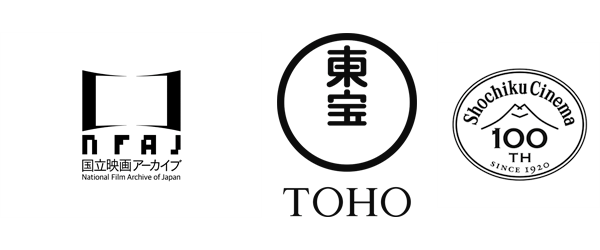SPOILER WARNING The following notes give away some of the plot.
‘Ring’ in this context refers to the sound of a telephone, though there’s also the connotation, in English, of a vicious circle without end. In Hideo Nakata’s blend of folk myth and technology, the curse is spread via a VHS cassette that condemns anyone watching it to a horrible death seven days later. And a telephone rings to seal the deal. The only way to survive is to copy the tape and pass it on to someone else, thus propagating the terror.
In effect, Ring is an update of M.R. James’s story ‘Casting the Runes’ (filmed in 1957 as Night of the Demon). The video, which resembles fragments of an experimental film, has been cursed by the spirit of a dead girl, Sadako, whose murder has (perhaps understandably) left her with a hefty grudge against humanity.
Ring tapped into the turn-of-the-century zeitgeist, infusing urban legend with a distrust of modern technology, but Sadako’s roots extend way back into Japanese cultural history. Her forebears include the grudge-bearing female yurei, with white burial kimonos and stringy long black hair, from popular ghost stories, which have inspired kabuki and film adaptations galore.
Ironically, the Ring phenomenon caught fire just as VHS was being rendered obsolete by DVD, though it’s unlikely that Sadako’s emergence from a well would have been as effective without that sense of a worn-out cassette, taped over so many times that residual images are starting to leak through. But Ring’s onward march also coincided with a proliferation of telephones and viewing devices, and its message went viral via newly minted internet forums. If ever a film were designed to be watched on a small screen, furtively, late at night in a teenager’s bedroom, it’s this one, though one can’t help wondering what post-millennials make of the VHS angle.
After 20 years, Ring itself has lost little of its elemental power. It’s a fat-free narrative, tightening the screws on its increasingly desperate reporter heroine with the help of Blowup-style parsings of the video and date stamps reminding us of her approaching deadline. The story is capped by one of the most hair-raising moments in modern cinema, as Sadako literally crawls out of the television screen towards her prey (and towards us – only the Fourth Wall holding her back). The only touch that now seems misguided are her victims’ faces freeze-framed in negative, as though ‘exterminated’ by a Dalek.
In the late 1990s, mainstream horror in the West was mired in post-modern slasher movies and CGI extravaganzas. Ring, with the similarly back-to-basics The Blair Witch Project (1999), kickstarted a return to primal fear, aiming to chill the spine with a steady drip-feed of dread rather than shock the system with violence and gore, and provided the blueprint for a less gruelling alternative to the 2000s ‘torture-porn’ trend. The film’s success spawned remakes, sequels (by Nakata and others), prequels (Norio Tsuruta’s 2000 Ring 0) and copycats; inspired other series (Grudge and Tomie); unleashed a tsunami of Hollywood remakes of Asian horror films; and ushered in a new era of ghosts and hauntings, which gave rise to popular new franchises such as Insidious (2010) and The Conjuring (2013).
Nakata’s Ring was itself a remake. Kôji Suzuki’s 1991 novel had already been adapted, more faithfully, for Fuji Television Network in 1995. And Nakata himself had already directed what was essentially a dry run for his big hit in Don’t Look Up (1996), a story about a film crew haunted by the ghost of a dead actress. Ring didn’t spring fully formed out of nowhere, but was the culmination of a Japanese trend in the 1990s for female-friendly haunted school stories and anthologies, in part a reaction against the gruesome and often misogynistic Guinea Pig-style videos of the 1980s.
For two decades, Sadako continued to adapt her MO to new technology until 2016, when she was pitted against the ghost from the Grudge movies in Sadako vs. Kayako. Such crossovers are usually a sign that a franchise is moribund, though Samara, her American incarnation, was still going strong in Rings (2017), spreading her curse via contact lists. The ultimate malware.
Anne Billson, Sight & Sound, April 2019
A contemporary review
‘Who did the story start with’ asks heroine Reiko midway through this riveting amalgam of modern urban myth and ancient eastern legend, a Japanese answer to The Blair Witch Project which sets a ghoulish leer of delight on the face of its ever widening audience. ‘Stories like that don’t start with anyone,’ replies her ex-husband Ryûji. ‘People feel anxious and rumours start flying. Or people start hoping that things will turn out like this.’ From the off, Ring keeps its audience guessing but, by the end, few could have predicted things would turn out so hellishly well.
Based on a best-selling horror pot-boiler by Kôji Suzuki, Ring became the highest-grossing horror film in Japanese history when it was released in 1998, bringing to mind the success of Daniel Myrick and Eduardo Sanchez’s off-beat low-budget shocker in the US. Originally double-billed with its sequel, Ring has become a cult in the East where dolls of Sadako – the murderous child-ghost at the murky heart of Ring’s narrative – are reputed to be as popular as Freddy Krueger gloves in the West. Such adulation is not undeserved. Even after the UK releases of both Blair Witch and The Last Broadcast, Ring remains compelling viewing, a stark treat which looks back to the austere black and white rituals of Kaneto Shindo’s unsettling samurai film Onibaba (1964), and sideways to the teen-slasher terrors of such films as Scream.
Director Hideo Nakata manages to strike a genuinely alarming balance between the cultural depths of Japanese folklore and the surface sheen of latter-day teen culture. With its video curses, late-night television links and matter-of-life-or-death phone calls, Ring has more than enough techno-friendly trappings to ensnare the average channel surfer. But lurking at the bottom of its well of intrigue is a timeless terror more attuned to the mature sensibilities of an adult audience. And it is this unique combination of old folk devils and contemporary moral panics which gives Ring such a nerve-rattling edge.
Having served his apprenticeship at the Nikkatsu Corporation (an exploitation house which nevertheless produced such avant-garde classics as Seijun Suzuki’s Tokyo Drifter, 1966) Nakata demonstrates a broad knowledge of the international horror genre, winking his eye toward the viral screen imagery of David Cronenberg’s Videodrome, and lending his ear – or at least that of Kenji Kawai (who scored the film) – to the atonal clatterings of Krzysztof Penderecki (used to fine effect in The Shining), and the synthesised wails of director Dario Argento’s music group Goblin. But his finest moments are entirely his own; it is hard to imagine anyone else making such ghastly use of a jerky, faceless human form during the apparitions of Sadako, and the sequence in which her spirit literally crawls out of the television set will scare the living hell out of you. No amount of high-tech special effects could match the balletic awfulness of this painfully simple sequence, which tops Poltergeist in the creepy cathode-ray stakes.
Whether the US remake of Ring will have anything like the same impact remains uncertain. Although Suzuki’s story has clear transatlantic potential, one is inclined to conclude that it is the telling, rather than the content of the tale, that is all-important. If the medium is indeed the message, then the message may well be that certain terrors can only be seen through the eyes of visionaries like Nakata.
Mark Kermode, Sight and Sound, September 2000
RING (RINGU)
Director: Hideo Nakata
Production Company: Omega Project
In Association with: Ace Pictures
International Distribution: Kadokawa Shoten, Pony Canyon Toho Co., Ltd., Imagica, Asmik Ace Entertainment
Executive Producer: Masato Hara
Producers: Shinya Kawai, Takashige Ichise, Takenori Sentô
Line Producer: Tatsuya Isomura
Associate Producer: Makoto Ishihara
Unit Production Manager: Tetsuya Nakamura
Assistant Director: Kuni Rishô
Screenplay: Hiroshi Takahashi
Based on the novels by: Kôji Suzuki
Director of Photography: Junichirô Hayashi
Lighting Supervisor: Nobuo Maebara
Visual Effects Supervisor: Hajime Matsumoto
Special Photographic Effects: Sei Yokoyama
Digital Effects: Kô Kawabata
Digital Matte Paintings: Yoshiyuki Kimura
Special Effects: Hajime Matsumoto
Editor: Nobuyuki Takahashi
Digital Film Editing: Hideo Tsuji, Yoshinori Watanabe
Production Designer: Iwao Saitô
Special Make-up Co-ordinator: Takuya Wada
Key Special Make-up: Yoshiichi Matsui
Optical Effects: Kôsei Haibara
Music: Kenji Kawai
Cast
Nanako Matsushima (Reiko Asakawa)
Miki Nakatani (Mai Takano)
Hiroyuki Sanada (Ryûji Takayama)
Yûko Takeuchi (Tomoko Oishi)
Hitomi Sato (Masami Kurahashi)
Yôichi Numata (Takashi Yamamura)
Yutaka Matsushige (Yoshino)
Katsumi Muramatsu (Kôichi Asakawa)
Rikiya Ïtaka (Yôichi Asakawa, Reiko’s son)
Masako (Shizuko Yamamura)
Daisuke Ban (Doctor Heihachirô Ikuma)
Kiyoshi Rishô (Omiya the cameraman)
Yûrei Yanagi (Okazaki)
Yôko Ïshima (Reiko’s aunt)
Kiriko Shimizu (Ryômi ïishi)
Orie Izuno (Sadako Yamamura)
Hiroyuki Watanabe (Hayatsu)
Miwako Kaji (Kazue Yamamura)
Yoko Kima, Asami Nagata, Yukiko Shimodaira (junior high schoolgirls)
Keiko Yoshida, Yoshiko Matsumaru, Yôho Naose (senior high schoolgirls)
Maki Ikeda (Yôko Tsuji)
Takashi Takayama (Takehiko Nomi)
Toshihiko Takeda (Yamamura as a teenager)
Chihiro Shirai (Sadako as a young girl)
Mantarô Koichi (town hall moderator)
Shinichi Noda, Kazufumi Nakai (press representatives)
Japan 1998
96 mins
J-HORROR WEEKENDER
Ring (Ringu)
Fri 29 Oct 18:10
Dark Water (Honogurai mizu no soko kara)
Fri 29 Oct 20:30
Cure (Kyua)
Sat 30 Oct 18:00
Pulse (Kairo)
Sat 30 Oct 20:40
Audition (Ôdishon)
Sun 31 Oct 15:20
Ichi the Killer (Koroshiya 1)
Sun 31 Oct 18:00
Supported by

In partnership wtih

With special thanks to

With the kind support of:
Janus Films/The Criterion Collection, Kadokawa Corporation, Kawakita Memorial Film Institute, Kokusai Hoei Co. Ltd, Nikkatsu Corporation, Toei Co. Ltd
BFI SOUTHBANK
Welcome to the home of great film and TV, with three cinemas and a studio, a world-class library, regular exhibitions and a pioneering Mediatheque with 1000s of free titles for you to explore. Browse special-edition merchandise in the BFI Shop.We're also pleased to offer you a unique new space, the BFI Riverfront – with unrivalled riverside views of Waterloo Bridge and beyond, a delicious seasonal menu, plus a stylish balcony bar for cocktails or special events. Come and enjoy a pre-cinema dinner or a drink on the balcony as the sun goes down.
BECOME A BFI MEMBER
Enjoy a great package of film benefits including priority booking at BFI Southbank and BFI Festivals. Join today at bfi.org.uk/join
BFI PLAYER
We are always open online on BFI Player where you can watch the best new, cult & classic cinema on demand. Showcasing hand-picked landmark British and independent titles, films are available to watch in three distinct ways: Subscription, Rentals & Free to view.
See something different today on player.bfi.org.uk
Join the BFI mailing list for regular programme updates. Not yet registered? Create a new account at www.bfi.org.uk/signup
Programme notes and credits compiled by the BFI Documentation Unit
Notes may be edited or abridged
Questions/comments? Contact the Programme Notes team by email

